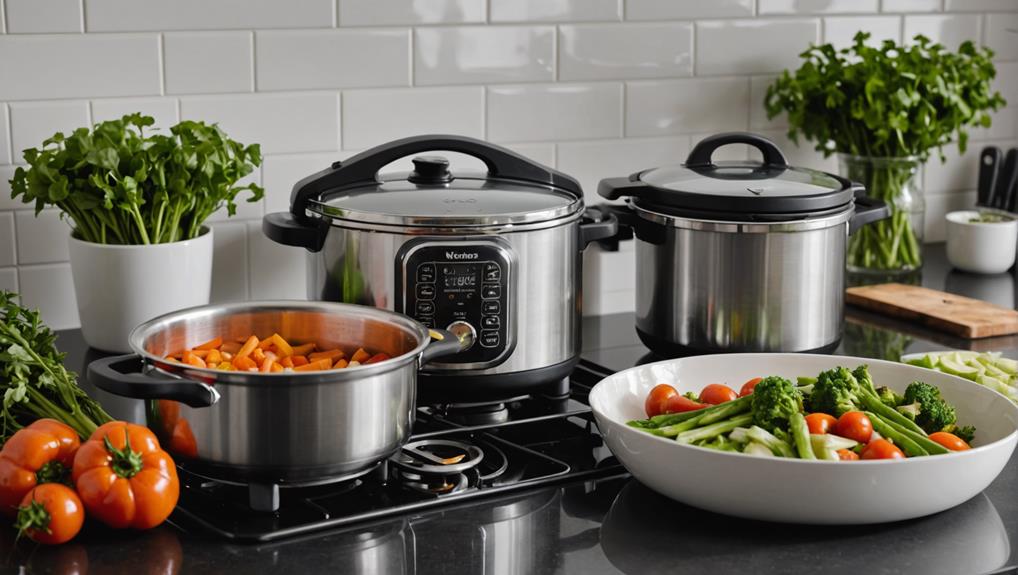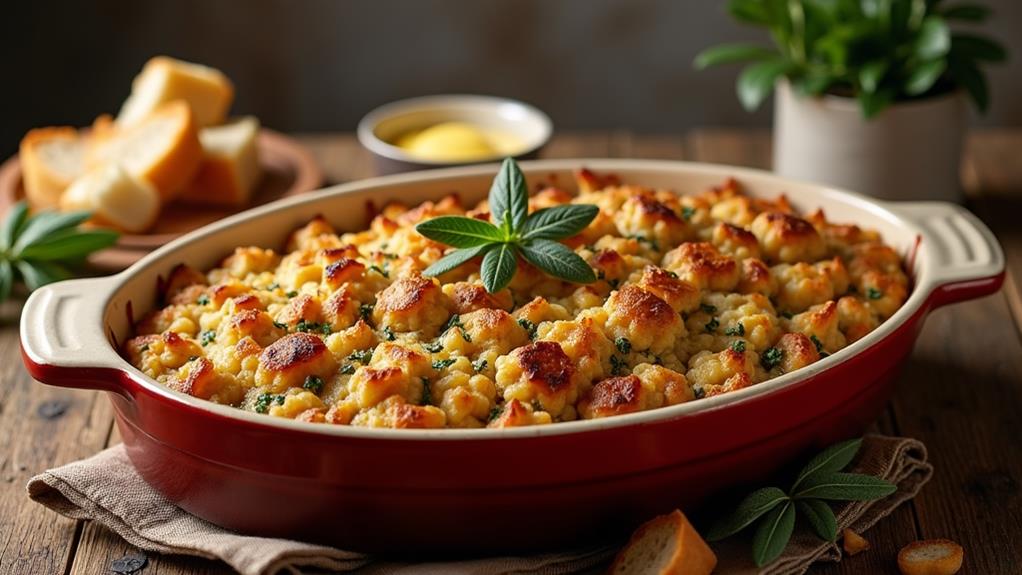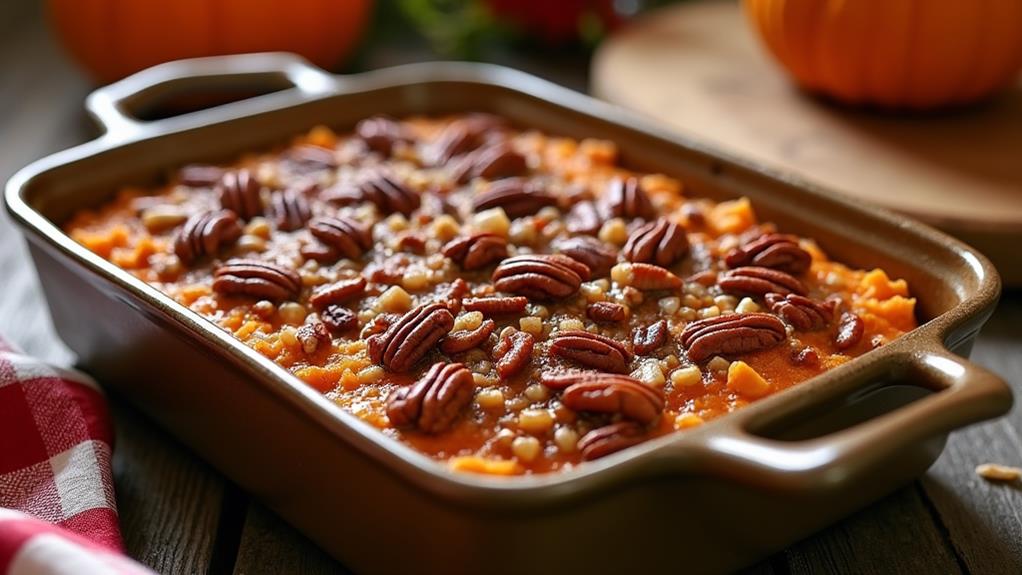Pressure cooking trumps boiling when it comes to preparing healthier meals. You'll retain 90-95% of nutrients with pressure cooking, compared to only 25-60% with boiling. The sealed environment preserves flavors better, intensifying the natural sweetness of vegetables. You'll save time and energy too, as pressure cooking can cut cooking times by more than half. It's versatile, allowing you to prepare a wide range of dishes from meats to desserts. Modern pressure cookers are safe and easy to use, minimizing the formation of harmful compounds. By adopting pressure cooking, you're choosing a method that maximizes nutrient retention, enhances flavors, and promotes overall health. Explore further to unlock the full potential of this superior cooking technique.
Nutrient Retention Showdown
Two cooking methods go head-to-head in this nutrient retention showdown: pressure cooking and boiling. When it comes to preserving the goodness in your food, pressure cooking emerges as the clear winner. You'll be amazed to learn that pressure cooking retains a whopping 90-95% of nutrients, while boiling can lead to a staggering loss of 40-75%. This means you're getting more bang for your nutritional buck with every pressure-cooked meal.
Let's dive deeper into the science. Pressure cooking's reduced cooking time is a game-changer for preserving heat-sensitive nutrients. It's not just about speed; it's about smart cooking.
Water-soluble vitamins, like vitamin C in broccoli, stick around better in the pressure cooker, with up to 92% retention. But the benefits don't stop there. When you pressure cook black beans, you're unlocking a sixfold increase in antioxidant content compared to boiling. The secret? Minimal liquid usage.
Flavor Profiles Compared
When it comes to flavor, pressure cooking and boiling are worlds apart. Pressure cooking retains more flavor in your dishes, thanks to its sealed environment that traps steam and aroma. You'll experience a sensory enhancement that's noticeably absent in boiled foods.
The steam in pressure cooking intensifies the natural sweetness of vegetables, while boiling often dilutes flavors as nutrients leach into the cooking water.
You'll find that pressure cooking allows complex dishes to develop deeper flavors rapidly. This contrasts with boiling, which typically requires longer cooking times, leading to diminished taste and nutrient loss.
Studies show that the high-pressure environment preserves volatile flavor compounds, resulting in fresher-tasting food. Additionally, pressure cooking improves the absorption of spices and seasonings, creating a more robust flavor profile.
When you boil, some seasonings may be washed away, leaving you with a less flavorful dish.
Time and Energy Efficiency
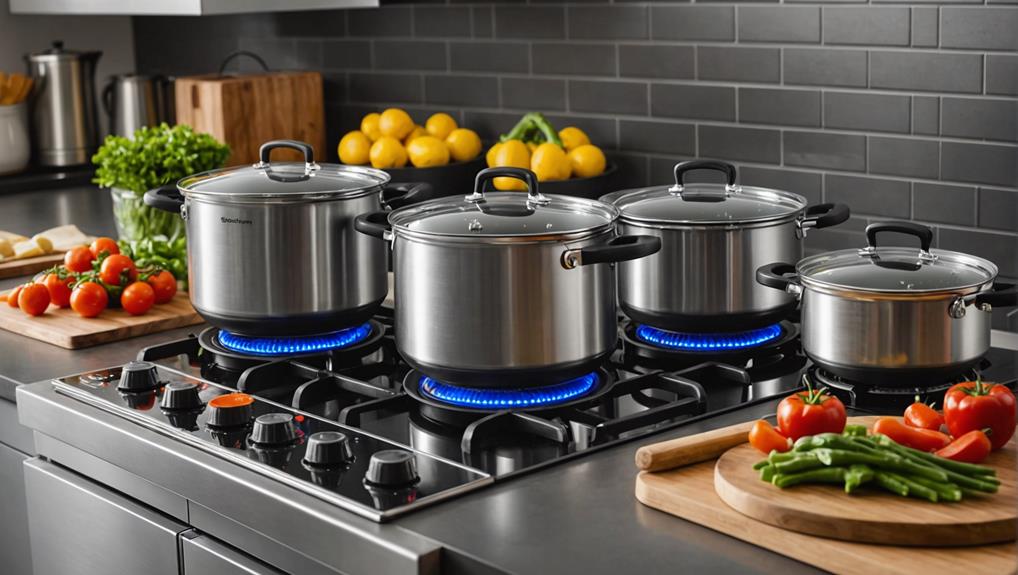
When you're looking to save time and energy in the kitchen, pressure cooking offers significant advantages over traditional boiling methods.
You'll find that pressure cookers can prepare meals in less than half the time it takes to boil, with whole chickens ready in about 25 minutes compared to over an hour for boiling.
Moreover, you'll appreciate the energy efficiency of pressure cooking, which can use up to 70% less electricity than boiling, making it an eco-friendly choice for your household.
Rapid Meal Preparation
Pressure cooking stands out from boiling in terms of rapid meal preparation. You'll be amazed at how quickly you can whip up delicious, nutritious meals using this innovative method. Unlike traditional boiling, pressure cooking harnesses high pressure to raise the boiling point of water to around 250°F, dramatically reducing cooking time.
This means you can prepare whole meals in under an hour, such as a comforting Harvest Vegetable Soup, a great way to incorporate seasonal flavors. The energy efficiency of pressure cooking is another game-changer. You'll use less water and heat, leading to lower utility bills and a smaller carbon footprint.
Imagine cooking a whole chicken in just 25 minutes, preserving more nutrients and moisture in the process. This method can save you up to 70% of cooking time compared to boiling, making it ideal for busy households seeking quick, healthy meals.
To make the most of your pressure cooker, experiment with different grains, vegetables, and proteins. You'll find that this versatile tool opens up a world of possibilities for rapid meal preparation while maintaining the nutritional value of your ingredients.
Embrace this modern cooking technique and revolutionize your approach to healthy eating.
Energy Conservation Benefits
Harnessing the power of pressure cooking can lead to significant energy conservation benefits. By utilizing a pressure cooker, you'll dramatically reduce cooking time and energy usage compared to traditional boiling methods. The sealed environment of a pressure cooker raises the boiling point to about 250°F, allowing food to cook faster at high temperatures while retaining heat and steam.
This efficiency means you can prepare meals like whole chickens in just 25 minutes, a fraction of the time required for conventional cooking methods.
You'll also conserve energy when cooking grains like brown rice, which typically requires only 6-7 whistles in a pressure cooker. This time-saving approach translates to lower gas or electricity consumption, optimizing your resource usage.
In fact, pressure cooking can conserve up to 70% more energy than stovetop boiling. By adopting this innovative cooking method, you're not only saving time but also reducing your carbon footprint.
The pressure cooker's ability to cook food quickly at high temperatures while preserving nutrients makes it an ideal choice for those seeking both efficiency and healthier meal options in their culinary endeavors.
Versatility in Meal Preparation
From quick weeknight dinners to gourmet desserts, pressure cooking offers unparalleled versatility in meal preparation. This method allows you to create delightful dishes like Blueberry Lemonade Popsicles in a fraction of the time it would take using traditional methods.
You'll discover that this innovative cooking method can handle a wide array of foods, from meats and vegetables to legumes and grains, all in under an hour. Unlike traditional boiling, pressure cooking's high heat and sealed environment allow you to create complex dishes like cheesecakes and perfectly cooked eggs, expanding your culinary horizons.
To maximize the benefits of pressure cooking, consider these techniques:
- Use pressure steaming for vegetables to preserve color and texture
- Employ the zero-minute cooking method for delicate greens
- Experiment with different cooking times for various ingredients
Safety Considerations
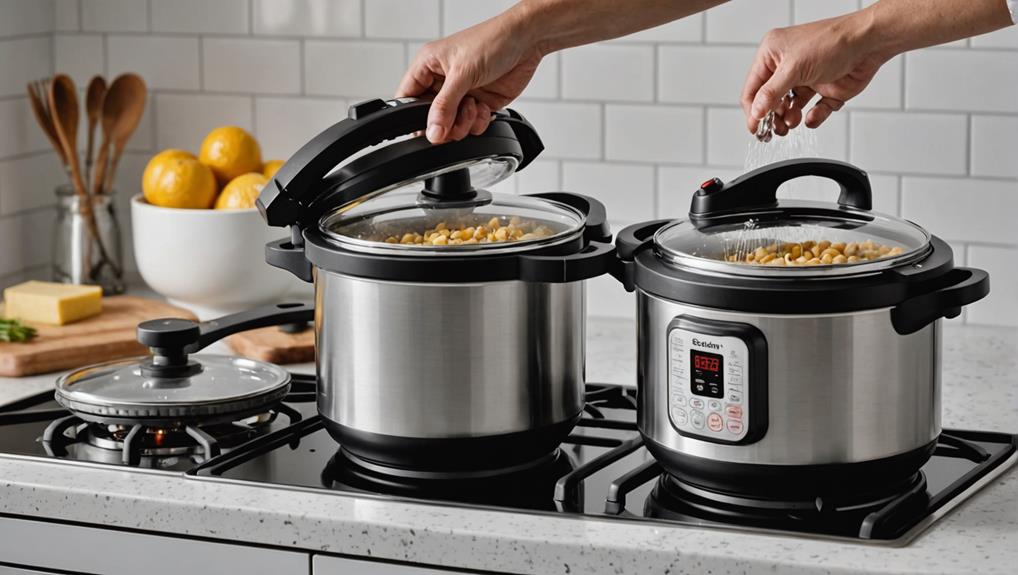
Safety takes center stage when comparing pressure cooking to boiling. Modern pressure cookers come equipped with advanced safety mechanisms, including locking lids and pressure release valves, protecting you from accidents caused by excessive steam or pressure buildup.
Unlike boiling, which can lead to nutrient destruction due to prolonged exposure to high temperatures, pressure cooking preserves essential vitamins more effectively.
You'll also benefit from the reduced risk of harmful chemical leaching when using high-quality pressure cookers made from stainless steel or other premium materials. This advantage isn't always guaranteed with low-grade cookware used in boiling.
While commercial High-Pressure Processing (HPP) techniques may compromise some nutrients and enzymes, traditional pressure cooking at home offers a safer alternative for maintaining overall food quality.
Moreover, pressure cooking promotes health-conscious cooking by minimizing the formation of harmful compounds like acrylamide and heterocyclic amines (HCAs). These substances often develop in foods cooked at high temperatures through other methods.
Health Benefits Explored
While safety is paramount, the health benefits of pressure cooking truly set it apart from boiling. You'll be amazed at how this innovative cooking method preserves nutrients, with up to 95% retention compared to boiling's 40-75% loss.
Pressure cooking isn't just about speed; it's a game-changer for your health. Here's why you should consider making the switch:
- Enhanced nutrient bioavailability: Pressure cooking breaks down anti-nutrients, improving protein digestibility and preserving antioxidants like sulforaphane in broccoli.
- Reduced harmful compounds: The controlled temperature of 250°F minimizes the formation of acrylamide and HCAs, often created in high-heat cooking.
- Time and energy savings: Vegetables cook in under 10 minutes, preserving more vitamins and minerals while using less energy.
Equipment and Techniques
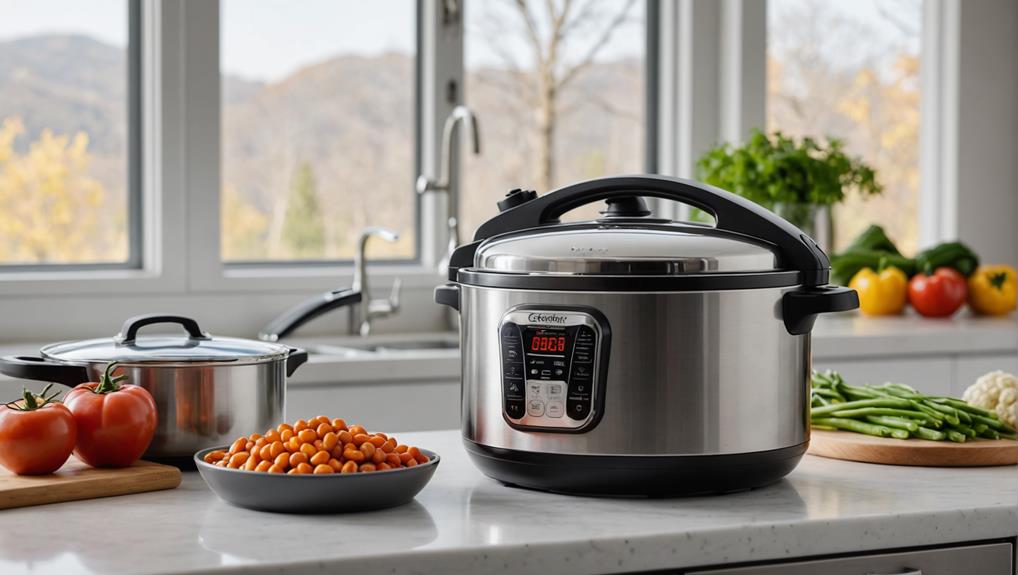
Pressure cooking's equipment and techniques offer a world of difference compared to traditional boiling methods.
The pressure cooker, a sealed vessel that raises the boiling point of water to 250°F, revolutionizes your cooking process. This innovative method uses steam to cook foods faster and more efficiently than stovetop boiling, which maxes out at 212°F. You'll notice a significant reduction in cooking times, with grains and legumes ready in just 6-7 whistles.
One of the key advantages of pressure cooking is its superior nutrient retention. While boiling can lead to a 40-75% loss of vitamins, pressure cooking preserves up to 95% of nutrients. To maximize these benefits, try soaking beans overnight before pressure cooking. This technique enhances nutrient absorption and cooking efficiency.
You'll also appreciate the minimal water requirement of pressure cooking, typically just two cups. This not only conserves water but also concentrates flavors and preserves nutrients that might otherwise leach into excess cooking liquid.
Culinary Applications and Tips
When it comes to culinary applications, pressure cooking offers a versatile and efficient approach to meal preparation.
You'll find that this method can dramatically reduce cooking time while maximizing nutrient retention.
To optimize your pressure cooking experience, consider these key tips:
- Minimize cooking liquid to preserve nutrients that might otherwise leach into the water during boiling.
- Pre-soak beans overnight to enhance efficiency and improve texture.
- Sauté or brown ingredients separately before adding them to the pressure cooker for enhanced flavor.
Frequently Asked Questions
Is Pressure Cooking Better Than Boiling?
You'll find pressure cooking superior to boiling. It offers enhanced nutrient retention, faster cooking times, and better flavor. You'll enjoy improved energy efficiency, food safety, and meal prep versatility. It's a game-changer for texture and kitchen convenience.
Is Pressure Cooking the Healthiest?
While pressure cooking's not definitively the healthiest, it's a top contender. You'll enjoy superior nutrient retention, shorter cooking times, and enhanced flavors. With energy efficiency, safety features, and improved textures, it's a game-changer for innovative meal prep and diverse recipes.
What Are the Disadvantages of Pressure Cooking on Your Health?
Picture this: your trusty pressure cooker might have a dark side. You'll face potential health risks like nutrient loss, toxic chemical formation, and overcooking dangers. It's not all rosy—food texture changes, allergenic reactions, and kitchen accidents are possible pitfalls too.
Does Cooking Food in a Pressure Cooker Destroy Nutrients?
You'll find pressure cooking actually enhances nutrient retention due to shorter cooking times and better heat distribution. It preserves flavors, maintains food texture, and minimizes vitamin loss. Pressure levels help extract minerals, making it a superior cooking method for ingredient interactions.
Final Thoughts
You've discovered the healthier way to cook, unveiling the benefits of pressure cooking over boiling. As you've seen, pressure cooking retains more nutrients, enhances flavors, and saves time and energy. It's a versatile method that opens up new culinary possibilities while maintaining safety. By understanding the equipment and techniques, you're now equipped to make informed choices in your kitchen. Embrace this efficient cooking method, and you'll revolutionize your meal preparation, creating healthier, more flavorful dishes with ease.

